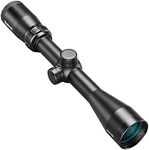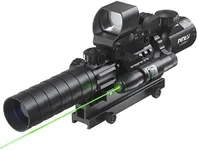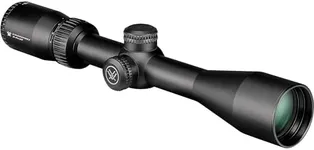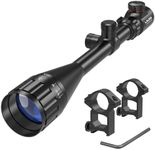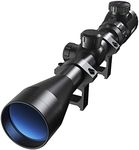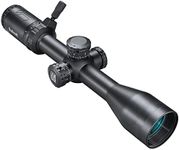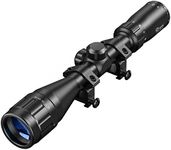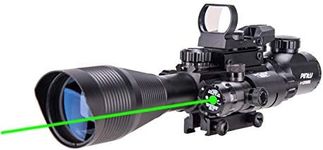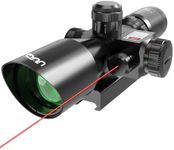Buying Guide for the Best Air Rifle Scopes
Choosing the right air rifle scope can make a big difference in your shooting experience, whether you’re target shooting, hunting, or just plinking for fun. The right scope helps you see your target more clearly and aim more accurately. When picking a scope, it’s important to think about how and where you’ll be using your air rifle, as different features and specifications can make a scope better suited for certain activities or environments. Understanding the key specs will help you find a scope that matches your needs and improves your overall shooting performance.MagnificationMagnification tells you how much closer the target will appear through the scope compared to your naked eye. This is usually shown as a number or a range, like 4x or 3-9x. Lower magnification (like 2x to 4x) gives you a wider view and is easier to use for quick shots or moving targets, making it good for close-range shooting. Higher magnification (like 9x or above) lets you see distant targets more clearly, which is helpful for long-range shooting but can make it harder to find your target quickly. To pick the right magnification, think about the typical distance you’ll be shooting and whether you need to spot small details or track moving targets.
Objective Lens DiameterThe objective lens diameter is the size of the front lens, measured in millimeters. A larger lens lets in more light, which can make the image brighter and clearer, especially in low-light conditions like dawn or dusk. However, bigger lenses also make the scope heavier and bulkier. Smaller lenses are lighter and more compact but may not be as bright in dim conditions. If you often shoot in low light, a larger objective lens can help, but for daytime shooting or if you want a lighter setup, a smaller lens may be enough.
Reticle TypeThe reticle is the pattern you see when you look through the scope, often called the crosshairs. There are different types, such as simple crosshairs, mil-dot, or illuminated reticles. Simple crosshairs are easy to use and good for beginners. Mil-dot reticles have extra marks to help you judge distance and adjust for bullet drop, which is useful for more advanced shooting. Illuminated reticles can be easier to see in low light. Choose a reticle that matches your experience level and the type of shooting you plan to do.
Parallax AdjustmentParallax adjustment helps keep the target and the reticle in the same focus, especially at different distances. Some scopes have a fixed parallax, usually set for a certain distance, while others let you adjust it. Adjustable parallax is helpful for precise shooting at various ranges, as it reduces aiming errors. If you shoot at different distances or want the best accuracy, look for a scope with parallax adjustment. For casual or close-range shooting, fixed parallax may be fine.
Eye ReliefEye relief is the distance you can hold your eye from the scope and still see the full image. Longer eye relief is more comfortable and safer, especially if your air rifle has a strong recoil, as it prevents the scope from hitting your face. Shorter eye relief can be fine for low-recoil air rifles. Consider how you hold your rifle and whether you need extra space for glasses or safety.
Durability and Weather ResistanceDurability refers to how well the scope can handle bumps, drops, and rough use. Weather resistance means the scope can withstand rain, fog, and dust. Look for scopes that are described as shockproof, waterproof, and fogproof if you plan to use your air rifle outdoors or in changing weather. If you mostly shoot indoors or in good weather, these features may be less important.
